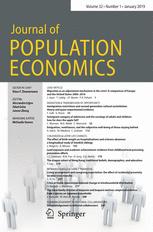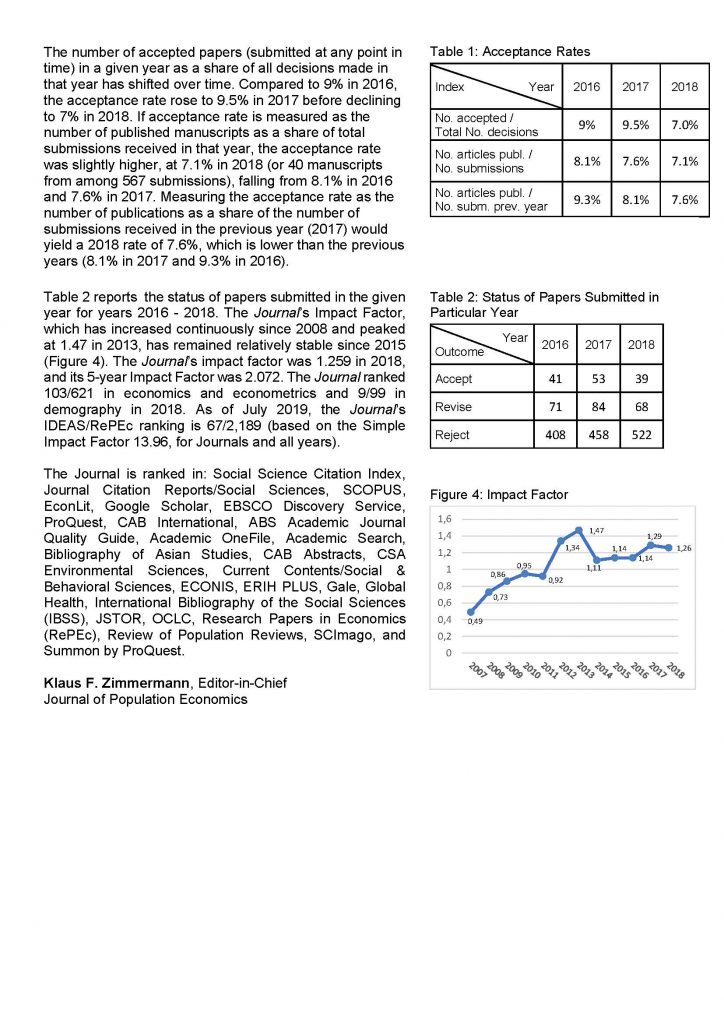The Editor-in-Chief (Klaus F. Zimmermann) and the Managing Editor (Michaella Vanore) of the Journal of Population Economics met on August 13, 2019 at UNU-MERIT in Maastricht/The Netherlands to discuss the newly available 2019 Editor-in-Chief Report (EiC), celebrated the just published October Issue 4/2019, and made plans for the forthcoming issues 1 + 2, 2020. The EiC report (see also below) indicates that the Journal receives nearly 600 submissions per year, with Impact Factor of 1.26 and an acceptance
rate of 7%. It ranks 68 of 2,253 journals listed in RePEc (August 2019). The Journal has its Headquarter at UNU-MERIT and is supported by the GLO network.
The newest issue 4 of October 2019 exhibits an impressive collection of 10 articles in areas (i) Social Remittances, (ii) Demography & Policy and (iii) Development in Family Contexts. The Lead Article Ancestral ecological endowments and missing women by GLO Fellows Gautam Hazarika, Chandan Kumar & Sudipta Sarangi deserves broad attention. It is open access for free over the next few weeks.
Gautam Hazarika, Chandan Kumar & Sudipta Sarangi:
“Ancestral ecological endowments and missing women“
Journal of Population Economics, Vol. 32 (2019), Issue 4 (October), pp. 1101-1123
Journal Website, complete issue 4. Paper PDF – OPEN ACCESS.
GLO Fellows Gautam Hazarika, Chandan Kumar Jha & Sudipta Sarangi
The article provides global evidence that there are proportionately more missing women in countries whose ancestral ecological endowments were poorer.
Author Abstract: This paper examines the relationship between ecological endowments in antiquity and contemporary female to male sex ratios in the population. It is found that there are proportionately more missing women in countries whose ancestral ecological endowments were poorer. This relationship is shown to be strong even after ancestral plough use, the timing of the Neolithic Transition, and many other potentially confounding factors are controlled for. Similar results are also obtained using district-level data from India.
EiC Report 2019: The 2019 Editor-in-Chief report is available here:
Ends;





